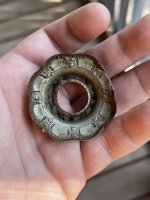49er12
Bronze Member
- Aug 22, 2013
- 1,238
- 1,627
- Detector(s) used
- Minelab xterra, Whites DFX, Notka Makro Simplex. Folks the price don’t mean everything, the question is are you willing to put in the time to learn the machine, experience will pay off I guarantee it.
- Primary Interest:
- All Treasure Hunting
I mean before it was considered priced in today’s world. Wasn’t silver and gold worth just what it was one dollar five dollar, when did it become determined such a value as listed today, 25.00 ounce or 1500.00 ounce, when did they determine this outrageous value of this metal, begin times it was just what it was wasn’t it.








